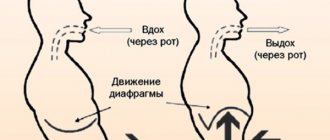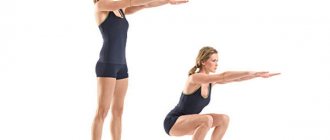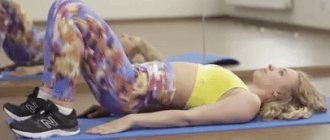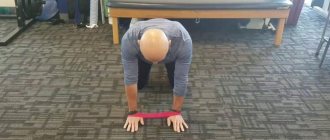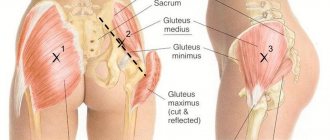Complications of lumbago 8093
The pelvis is one of the most important structural parts of the supporting mechanism of the human body. It is responsible for balance and balance. With its help, the lower limbs are attached to the body and spinal column. Pelvic distortion is a very common condition, but sometimes ignored, because at a minor stage of the deviation it is difficult to diagnose it, it is easier to make an incorrect diagnosis when there is pain and begin to carry out completely ineffective treatment.
The pelvis forms a closed ring of several bones. Between them there may be cartilaginous connections or low-moving joints in the form of hinge-type joints. The pelvic bones are most mobile in young women in the reproductive period of life. This is necessary to ensure labor activity and childbearing. In men, the pelvis is narrower and stronger. In them, misalignment of his bones is less common.
The pelvic cavity contains the reproductive organs, bladder, and intestinal loops. In addition to their protection, the pelvis provides balance to the body due to its symmetrical location.
Any tilt of the pelvis leads to an imbalance throughout the body. An imbalance occurs and the muscular frame of the body tries to align it due to the subsequent curvature of the spinal column. Roughly speaking, if the pelvis is skewed to the left, then in order to maintain balance, the shoulder girdle must be skewed to the right by the same degree. Thus, misalignment of the pelvic bones often causes the formation of scoliosis (curvature of the spine in the lateral projection).
The pelvic distortion can be either lateral, anterior or posterior. It is very difficult to independently determine the presence of this orthopedic pathology. One can only draw certain conclusions based on indirect clinical signs. Therefore, if you suspect the development of such a problem, then you need to see a chiropractor, osteopath or orthopedist as soon as possible. These doctors will help you make the correct diagnosis and develop an individual correction plan. At an early stage, before destructive changes have occurred in the spinal column, this pathology can be cured using conservative methods, without surgery.
Before correcting a pelvic distortion, you need to make sure that it really exists. If you have this pathology, it will be difficult or even impossible to perform some movements. For example, it is difficult to move the pelvis back and forth and perform rotational movements.
Correct diagnosis, carried out before correcting pelvic distortion at home, allows us to identify the location of the pathology and the degree of its development. This information will allow you to develop an effective recovery plan and subsequent rehabilitation.
In the article we will consider the main issues related to this orthopedic pathology. We will tell you what reasons contribute to its formation, and which doctor is best to contact for diagnosis and treatment. What correction methods allow you to restore the physiological position of the pelvic bones.
Causes of pelvic distortion
One of the common diseases of the pelvis is the displacement of its bones. Pelvic distortion develops under the influence of factors:
- Sedentary lifestyle (hypodynamia) - frequent sitting leads to weakening of some muscles and contributes to constant tension in others. This phenomenon does not go away without leaving a trace, being the cause of an oblique pelvis.
- Lifting Heavy Objects – Weightlifting without proper instruction is not recommended. Improper physical exercises (jerks, lifting and carrying dumbbells with one hand, etc.) lead to the development of the pathology in question.
- Various injuries to the pelvic bones - injuries usually occur due to blows, falls, bruises. Of particular danger are open bone fractures and rupture of the pelvic ring.
- Pregnancy: The structure of the female pelvis is ideal for childbirth, but during pregnancy, the bones in this area often become displaced.
- Injuries to the pelvic muscles - damaged muscles become less elastic and are constantly in a tense state. The direction of displacement depends on which muscle is damaged. Damage to the psoas muscles leads to anterior displacement of the pelvis, and injury to the quadriceps muscle leads to modification (flexion) of the hips.
- Intervertebral disc herniation - the development of pathology in this case is due to chronic muscle spasm.
- Difference in leg length - when one limb of a person is shorter than the other from birth or due to an illness, the pelvis twists or shifts from right to left, rarely from back to front.
- Congenital or acquired scoliosis.
- Previous surgery in the area of the pelvic or iliac bones.
Benefits for the body
A decrease in the strength of the pelvic floor muscles is caused not only by age-related changes, but also by accompanying factors, such as a sedentary lifestyle, excessive physical activity or, conversely, lack thereof, obesity, and bad habits.
Regularly performing a set of exercises using the Kegel technique:
- Prevents male diseases. Gymnastics improves blood flow in the veins and arteries, thereby reducing the risk of developing prostatitis, adenoma, hemorrhoids, and urethritis. For existing pathologies, training speeds up recovery and helps avoid disease progression.
- Restores normal control over urinary function. Urinary incontinence in adulthood can be caused by various factors. Kegel exercises allow you to avoid involuntary urine discharge during laughter, sharp coughing, and physical activity.
- Improves the course of hemorrhoids, enuresis, and fecal incontinence. Exercising the muscle improves blood circulation in the pelvic area and at the same time provides support for the bladder and intestines. This allows you to get rid of the unpleasant symptoms of the diseases listed above.
- Improves night sleep. With prostatitis and other problems with the prostate gland, most men suffer from nocturia, that is, from frequent urination at night. Accordingly, this interferes with getting enough sleep and negatively affects mood and performance. Kegel muscle training eliminates this problem.
- Positively affects intimate life. After only 2-3 months of training, men note an increase in libido, maximum erection stability, the absence of “notches”, prolongation of sexual intercourse, brightness of orgasm and prolongation of the sensations caused by it.
- Improves the production of the main male hormone – testosterone.
Gymnastics for the intimate muscles using the Kegel method gives men not only excellent potency and the opportunity to lead a full sex life until old age.
Exercise prevents the development of serious pathologies, helps maintain good physical shape, and has a beneficial effect on mental health and ability to work.
Symptoms of the disease
Some symptoms of the disease can be recognized in the early stages of development. It is necessary to take a closer look at the peculiarities of the course of the disease in a timely manner and seek the help of a specialist for further treatment:
- Severe pain that occurs while walking, running, or moving your legs.
- Unsteady gait, frequent falls for no reason, loss of balance.
- Pain appears in the back, lower back, neck, and shoulders. The pain gradually radiates to the legs.
- Unpleasant sensations in the genital area, groin.
- Dysfunction of the genital organs (men experience a sharp decrease in libido against this background).
- Pain in the buttocks and thighs.
- One limb gradually becomes longer than the other.
- Bladder dysfunction.
- Diseases of the gastrointestinal tract (intestinal disorders).
- Pain in the knees, ankles.
- Movements become constrained.
- One shoulder will be higher than the other (the person unconsciously raises it).
If several signs of the disease are detected, you need to visit a doctor and think about rational treatment for a skewed pelvis.
Anatomical location of the Kegel muscle and how to detect it
The location of the pubococcygeus muscle is the pelvic floor. With its anterior end it is attached to the pubic bone, from which the muscle extends along the lower part of the pelvic region to the coccyx, where it is fixed to the ligaments.
The localization of the coccygeal-pubic muscle and the functions it performs determine its other name, the most common of which are:
- RS muscle.
- PC muscle.
- The muscle of love.
- Diaphragm of the pelvic floor.
The functioning of the love muscle is controlled by the pudendal nerve. It ensures the transmission of impulses to the tissues of the perineum, to the bladder, to the prostate gland and to the seminal vesicles, as well as to the lower part of the large intestine.
During sex, the PC muscle is responsible for ejaculation and stimulates the contraction and relaxation of the anus.
The organ performs several functions at once:
- Ensures proper functioning of the genitourinary system.
- Maintains blood circulation in the pelvic vessels at the proper level.
- Ensures normal outflow and flow of blood to the genital organ.
- Controls bowel movements.
To properly perform Kegel gymnastics, you must first find the love muscle.
There are two ways to do this:
- The first involves forced tension of the muscle during urination. It is best to train in the morning after sleep. During the release of a stream of urine, it is necessary to stop this process. This can only be achieved by tensing the pubococcygeus muscle. When you succeed, you will need to remember the place where the greatest compression or otherwise tension is felt. It is this point that will need to be tensed during exercises.
- The second method of detecting the muscle is possible only when the penis is at the “peak” of erection. In this state, using a muscle, you need to make the penis move up and down, that is, bounce. At the same time, you need to place your palm on the perineum, this will allow you to feel at which point the greatest tension and movement of the muscle is noted. This place will need to be pumped.
Training the love muscle will allow you to achieve conscious, that is, subordinate to the desires of a man, tension and relaxation of the muscle, as well as simulating its jerking (pushing) movements.
POPULAR WITH READERS: How to treat prostatitis at home with folk remedies, effective recipes
Diagnostics
You can determine the disease yourself, but to complete the clinical picture, you need to visit an orthopedist-traumatologist. The doctor begins examining the patient after a detailed anamnestic analysis. It is important to identify the root cause that provoked the development of the pathology, and then begin treatment. After completing the medical history, the specialist will conduct a visual examination of the patient and palpate damaged, disturbing areas.
Radiography
Initially, you need to get a referral from a specialist for an x-ray, which will show the condition of the pelvic bones and pelvis as a whole, including the femurs, which suffer significantly from this disease.
If the disease is at an early stage, its main symptoms may be barely noticeable. That is why the condition of the pelvic bones during distortion must be judged after an MRI study. And based on its results, decide what to do in the future.
Treatment of pelvic distortion
To effectively treat displaced pelvic bones, it is necessary to identify the root cause of the disease. The fight against the disease consists in eliminating the factors contributing to its development. Drug therapy in the treatment of pathology is based on taking the following medications:
- Anti-inflammatory drugs (non-steroidal).
- If you often experience pain, then it is advisable to use various analgesics.
- It is recommended to apply healing ointments to the damaged area of the body.
If symptoms of a twisted pelvis are detected, treatment for this disease should begin as early as possible. An advanced form of the pathology requires surgical intervention, so it is better to treat the disease in the early stages. In Moscow and other large cities of Russia there are specialized clinics where effective comprehensive treatment is carried out for oblique pelvis.
There are other methods of treating pelvic distortion, which should be used after medical consultation:
- Physical therapy, performing various gymnastic exercises.
- Manual therapy, massage of the damaged area of the body.
- Physiotherapeutic procedures.
Pelvic distortion, the treatment of which is effective only in the first stages of development, is not always subject to complete healing. But an integrated approach to treatment will give the expected positive result.
Rules for performing gymnastics
The load increases gradually. There should be no pain during the exercises. First, you need to do several repetitions of each exercise, and over time, their number needs to be increased. The workout should be done comfortably. Systematic approach to training. During training, exercises are first performed to compress the pelvic floor muscles, and then to relax them, then push-out exercises are done. When performing each exercise, make sure that only the pelvic area is tense. The buttocks, thighs, and abdominal wall should be in a relaxed state. Before performing Kegel exercises, you should empty your bladder. This will avoid pain during exercise and stretching of the bladder tissue.
To achieve success and see the results of using the exercises, you need to learn how to perform them correctly. You cannot do without the help of a professional; a specialist teaches the correct technique for performing exercises and selects a suitable complex depending on the patient’s problem. The “Quality of Life” Rehabilitation Medicine Clinic invites you to consult with physical therapy doctors. Our physical therapy instructor Marina Osokina will teach you how to perform the exercises correctly.
Pelvic distortion in children
If a child has a pelvic distortion, treatment should be urgent. Wellness procedures in this case require more time. Among the reasons for displacement of the pelvic bones in children, congenital pathology is distinguished. But most often the disease is acquired. Children spend a lot of time sitting at their desks at school, and then at home in front of computer and TV monitors. Low physical activity leads to the development of the disease in question.
To treat children's oblique pelvis, it is important to normalize the deformed areas of the body.
It is worth strengthening the child’s back muscles, straightening his posture with the help of a variety of physiotherapeutic procedures (mud therapy, hydrotherapy, massage therapy, physical exercise).
Postural imbalance
There is currently no research demonstrating a direct link between excessive lumbar lordosis and low back pain. But there is a study showing limitation of hip extension, internal and external rotation in patients with chronic, non-specific back pain. We all know that when hip flexion is limited, lumbar lordosis will increase compensatoryly. By working as a whole, with the hip-pelvis-lumbar complex, we can significantly help the patient.
From an aesthetic point of view, anterior pelvic tilt does not have any special advantages, because In this case, the stomach will seem larger than it actually is.
Health-improving exercises as a means of combating illness
Treatment with physical education is a fairly effective remedy against the developing distortion of the pelvic bones. Most experts recommend the following exercises to patients:
- Lie on the floor, place your arms along your body, and place a soft pillow under your feet. Relax all your muscles and begin to roll on your stomach left and right. It is not recommended to lift your hips off the floor; for greater effectiveness, you need to sway your buttocks. The exercise time is no more than 10 minutes, 3 times a day.
- Lie on the floor, bend your right leg at the knee so that it is at a right angle. Then we place the left leg with the outer side of the foot on the bent knee of the right limb. We strain our gluteal muscles and try to lift our pelvis off the floor.
- We lie on the floor with our arms out to the sides, palms down. We tense the muscles of the buttocks, take sliding steps with our heels towards the pelvis, slightly raise our hips.
Physical education treatment is prescribed by the attending physician. The specialist recommends gymnastic exercises, assessing the patient’s health status, stage of the disease, age and condition of the body.
When performing therapeutic exercises, pain, discomfort and other unpleasant sensations should not appear. Health-improving gymnastics should bring benefits, not harm.
Differences between training complexes
Kegel originally developed a system of exercises for women to non-surgically eliminate urinary problems after childbirth. Subsequently, other indications for performing exercises were added. With their help, they began to prevent hemorrhoids, treat and prevent prolapse of the pelvic organs, and also solve specific women's problems. For example, to prepare for childbirth, restore the tone of the vaginal muscles, and reduce the volume of the uterus.
Later, taking into account the peculiarities of the anatomy and physiology of the stronger sex, Kegel gymnastics was developed for men. It is based on training the pubococcygeus muscle, so a number of exercises for men differ from those created for women. To prevent the development of sexual dysfunctions and diseases of the genitourinary system, to improve their sex life, men need to do gymnastics created specifically for them.
You can train in an office chair, while driving, in an elevator, and even on the couch.
Consequences of incorrect pelvic position
Displacement of the pelvic bones leads to problems that complicate human life processes:
- Curvature and dysfunction of the spine - misalignment of the pelvic bones contributes to deformation of the spinal column. This phenomenon causes most pathologies affecting the spinal region. Radiculitis, osteochondrosis, intervertebral hernia are the most common diseases caused by the disease in question.
- An oblique pelvis often provokes pain in various parts of the human body (neck, back, shoulders, legs).
- The disease leads to dysfunction of the limbs.
- The development of carpal tunnel syndrome (long-term painful numbness of a person’s fingers) is observed.
- When walking, the main load falls on one of the limbs.
For prevention purposes, it is recommended to lead an active lifestyle and exercise daily. It is important to pay attention to swimming in the pool, and, if possible, go horseback riding.
Why are pelvic floor muscles needed at all?
Contrary to popular belief that they are only needed to control urination and bowel movements (which is generally true), they also:
– provide support for internal organs,
– together with the abdominal muscles provide intra-abdominal pressure,
– connect the pelvic bones and the sacrum, stabilize the sacrum as part of a deep internal block.
– turn on when walking, moving arms and legs, and in any everyday movements.
In fact, weakened pelvic floor muscles can be the cause of complaints about the sacroiliac joint.
The pelvic floor muscles are part of the core and must be functional and working. They turn on in any everyday situations, stabilize the pelvis, and provide us with alignment of the chest and pelvic area.
Abdominal training should also include training the pelvic floor muscles.

